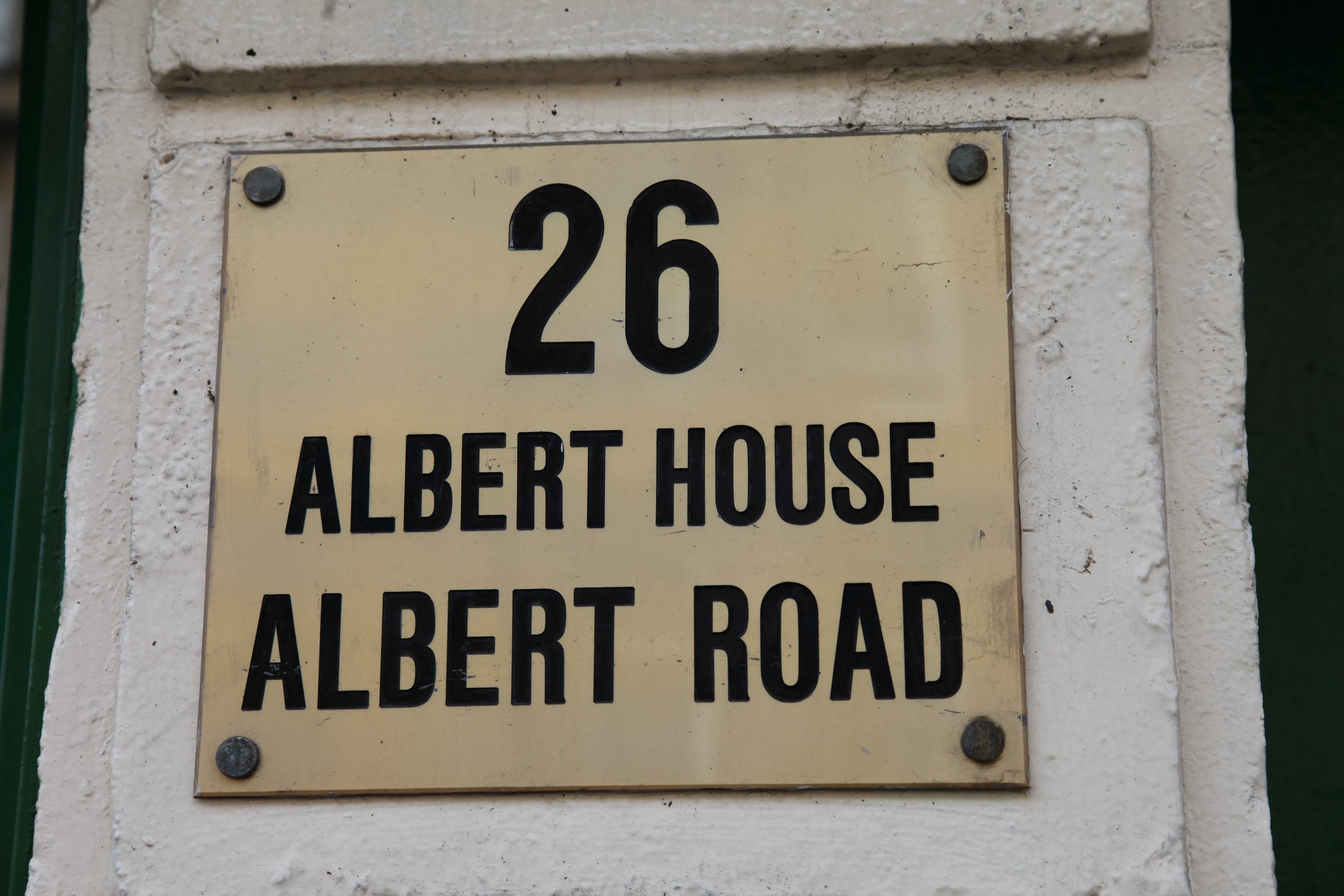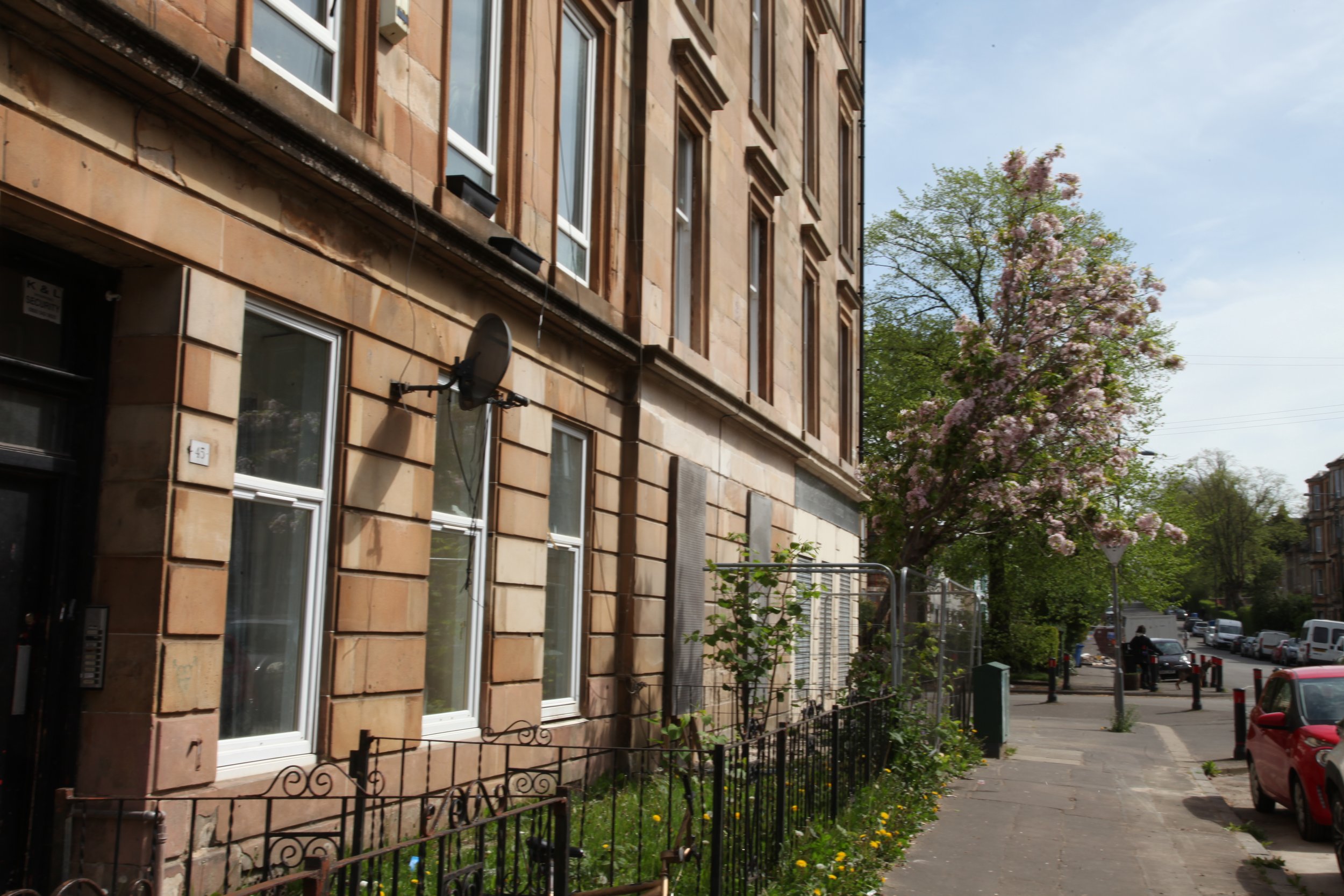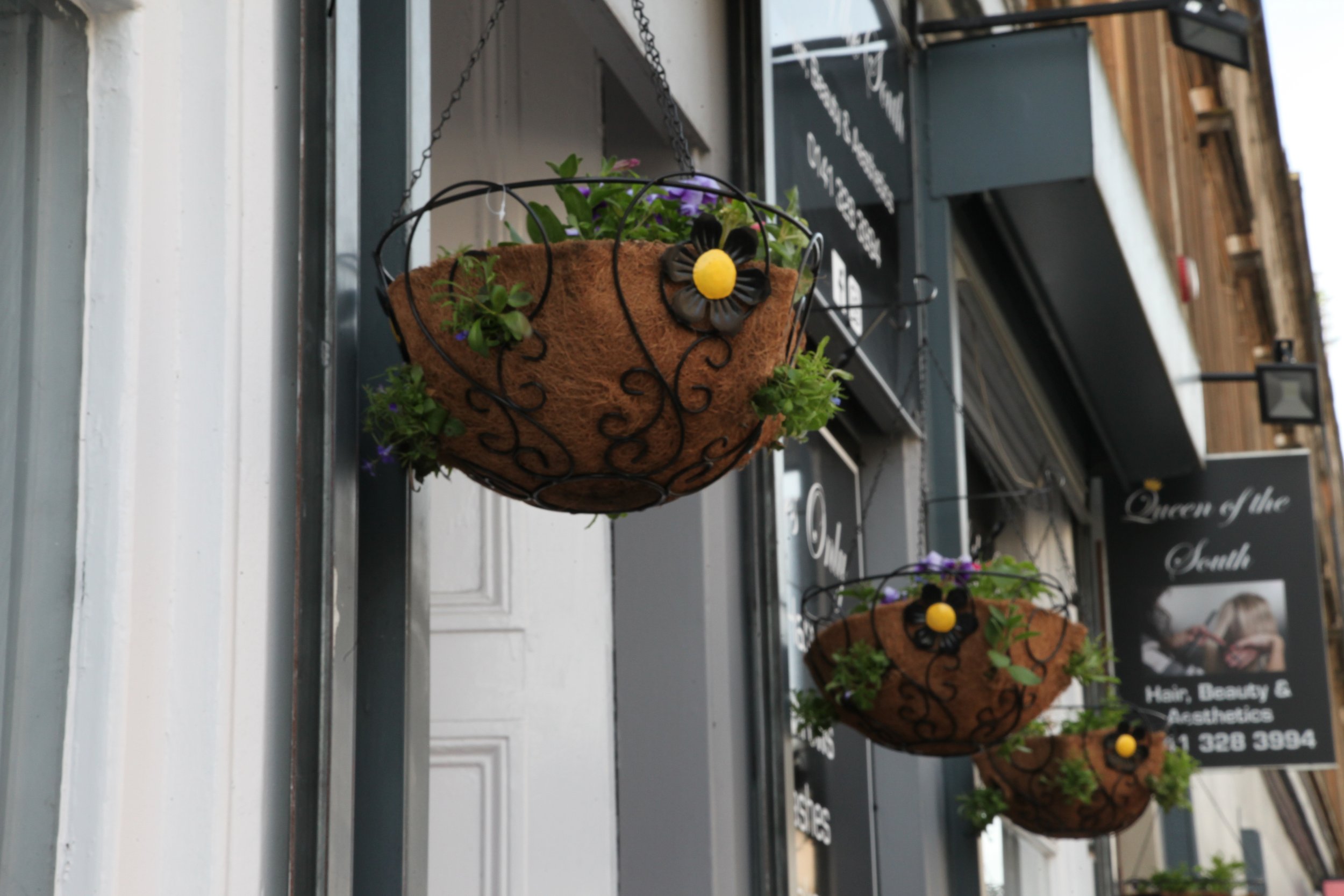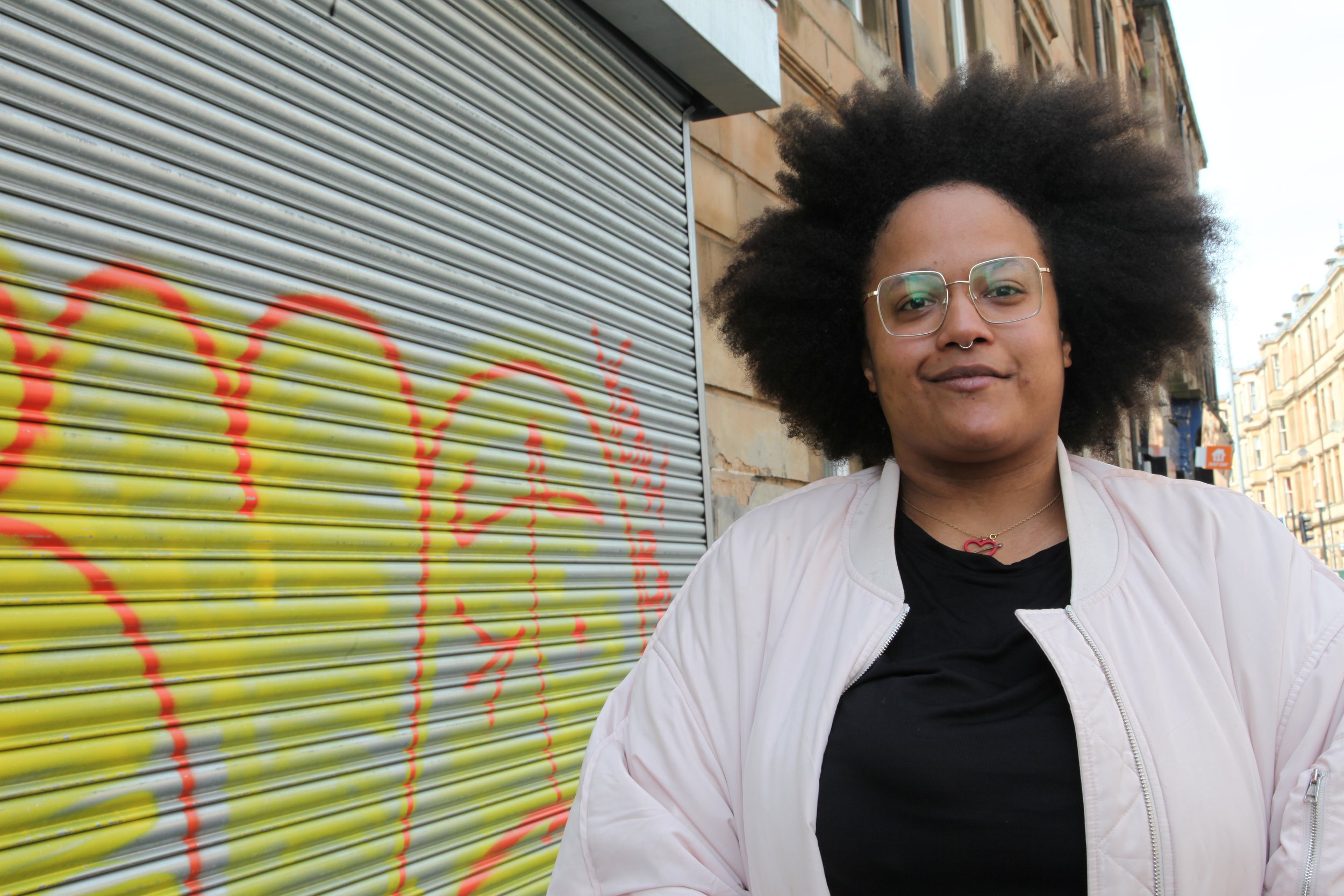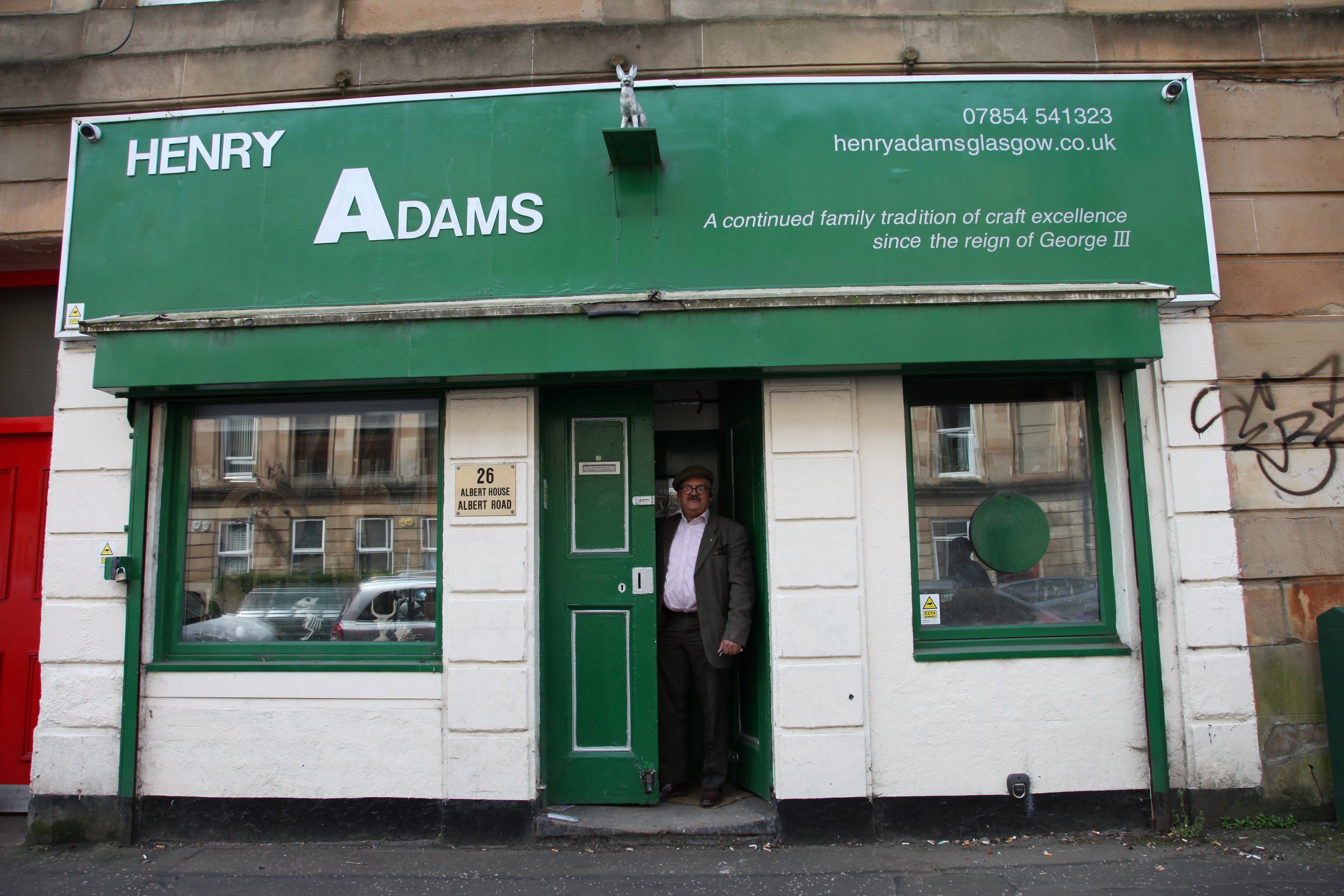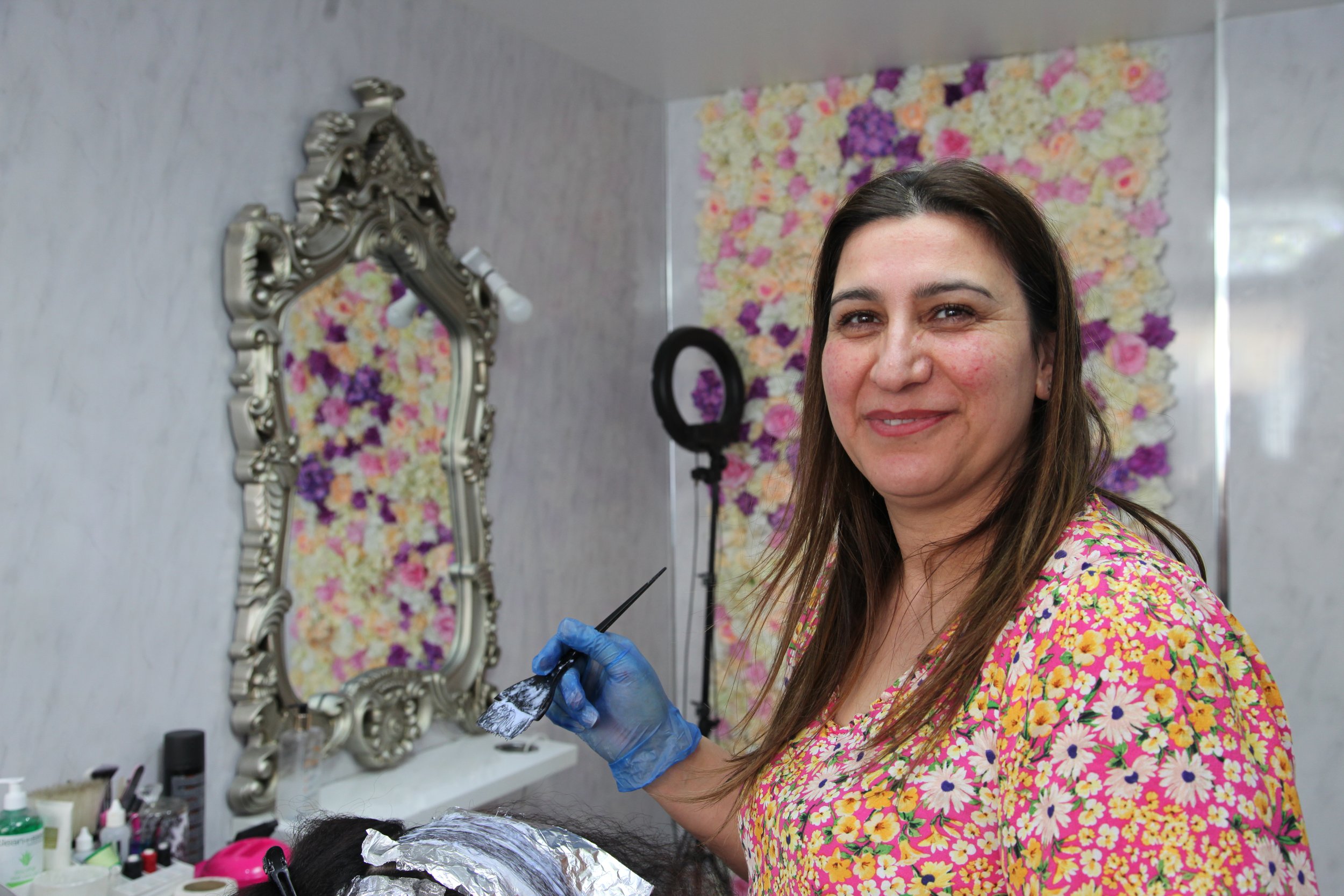Dreams for Albert Road
How would you transform your street to encourage more outdoor living? Residents and businesses share their ideas while pondering how these changes would impact community and local trade
By Jack Howse | Interviews and Photos by Anne Milne | Illustration by Laura Hurst
The end of Albert Road between Victoria and Langside Road is your typical Govanhill/Crosshill street. Residents from all over live in a mix of social housing, privately-rented and owner-occupied tenement flats. As well as more transient neighbours, you’ll find some residents who have been there for decades. People passing shout up to their pals in the flats above, heads poke out between the curtains, wee ones run charging through the open closes to the gardens at the back.
Below the three stories of tenement accommodation, businesses new and old line the pavement. A silver hare sits atop Henry Adams shopfront – the old symbol of a silversmith. The Hampden pub recently closed and reopened as the Rose Reilly, named after the trailblazing Scotland footballer. Community organisations, The Well and Community Renewal, have both recently relocated from the road. The Glasgow Zine Library is opening where Community Renewal once stood.
“When I was first here, the street was extremely scruffy, but it’s certainly improved in the last 10 years,” said Jim Jones from Henry Adams who has been trading in Govanhill for decades. The owner of Queen of the South beauty parlour, Zohad, has been there for over three years said: “There used to be a lot more empty shop premises, but you don’t see them as much now.”
But while the street is calm and friendly, there is not so much space for outdoor living. Like many streets that flank Victoria Road, the top of Albert Road has been made into a deadend and the cars of people using the high street shops soon pile up, double parking is common.
There are only two trees on this section of the road, one of which is a sorry looking sycamore ringed by a metal fence. “That tree has destroyed the pavement, which is bad for people who are out and about,” Yvonne, a resident told Greater Govanhill. There is also cherry blossom further down, but this has been ravaged by the tree-killing Japanese knotweed.
Just across Victoria Road, on Albert Drive, there are planters and a seating area that have been designed and built by local residents. They were built by the 4 Albert Avenue Residents' Association as part of the South City Way community projects fund. Local resident Anne Milne said she wishes Albert Road could have the same, and an Albert Road residents association might be a way to bring in some of the changes they’d like to see.
So how could the road be better designed for better urban outdoor living? Many mentioned the overflowing parking as an issue: “There should be parking restrictions so that there wouldn’t be double and triple parked cars” said Anne. While another resident, Jim said: “I’d like more bicycles, more bike parking.” Bicycle storage has been installed but it’s not enough.
Glasgow Zine Library are the new kids on the block: “As newcomers to the road, we're definitely keen to hear more about what our neighbours have to say” said Chris Yeoh, deputy director. More widely the library believes in free public access space: “It'd be amazing to see the street more pedestrianised so that we could have more public seating, space to gather and for kids to play, for people to sit and read in the sunshine, space where no one has to spend any money to exist” said director of the library, Lauren Davies.
Yvonne and Jo, friends and neighbours, have even bigger ambitions for the street:
I think it would be great just to get rid of all the fences and then have a whole length of street garden… and a cycle path on the other side with little cycle hoops all the way down. Yvonne also pointed out that underneath the thin layer of tarmac probably lies old cobblestones that used to line most streets in Glasgow. “It would make it more like Amsterdam.
Amsterdam is synonymous with cycling ownership and infrastructure, but it was not always like this. In the 50s and 60s car usage dominated and road traffic casualties soared, particularly amongst children. Families would have picnics in the middle of the road to stop cars driving down, activists would paint geurilla bicycle lanes under the cover of darkness and mass cycles were organised along dangerous stretches of road and problems encountered were documented. It was only through public will that The Netherlands’ cycling culture was born.
Anne also mentioned Amsterdam: “there are less spaces for cars, more bike parking, places to sit, and lots of trees and plants” she said. Lauren too, looks abroad — to their hometown in Illinois:
I grew up going to block parties in my small town and the street would be closed down for a whole day. All of the neighbours would gather and barbecue in the street and eat each other’s potato salad. I wish we could see a bit more of that in our streets.
Block parties have been big in America for over a century and are usually held with no bureaucratic permission. During the 60s, African-American and Latinx communities (who were not welcome in many establishments) would host block parties with sound-systems hooked up to street lights. It was through this community occupation and festivities that hip-hop was born in 1973 West Bronx.
All the residents and businesses centred the community in their thoughts for the space. Businesses also mentioned how things like bike parking would encourage people to buy local. So, is there a symbiotic relationship between outdoor living and a flourishing neighbourhood? The 15/20-minute city concept would certainly suggest so. The urban planning concept is based around the idea of having all your daily needs – work, food, healthcare, education, culture and leisure – within a 15/20-minute walk or bike ride from where you live. The theory has recently been swept into the so-called culture wars, painted as an attack on civil liberties. Yet supporters of the concept argue that it improves circular economies, wellbeing and helps to curb climate change. Glasgow City Council’s version are their Liveable Neighbourhoods Plans which they are currently consulting on.
Read more: Greater Govanhill's Guide to the Fifteen Minute City
Outdoor living can be a way to appreciate what you have on your street, and create a more local, circular economy. We keep our local traders going and pay money back into our community when we want to spend time outside on our local high street. Outdoor living goes beyond being able to top up your tan outside your front door, it inspires community action and an economy that helps a neighbourhood thrive.

